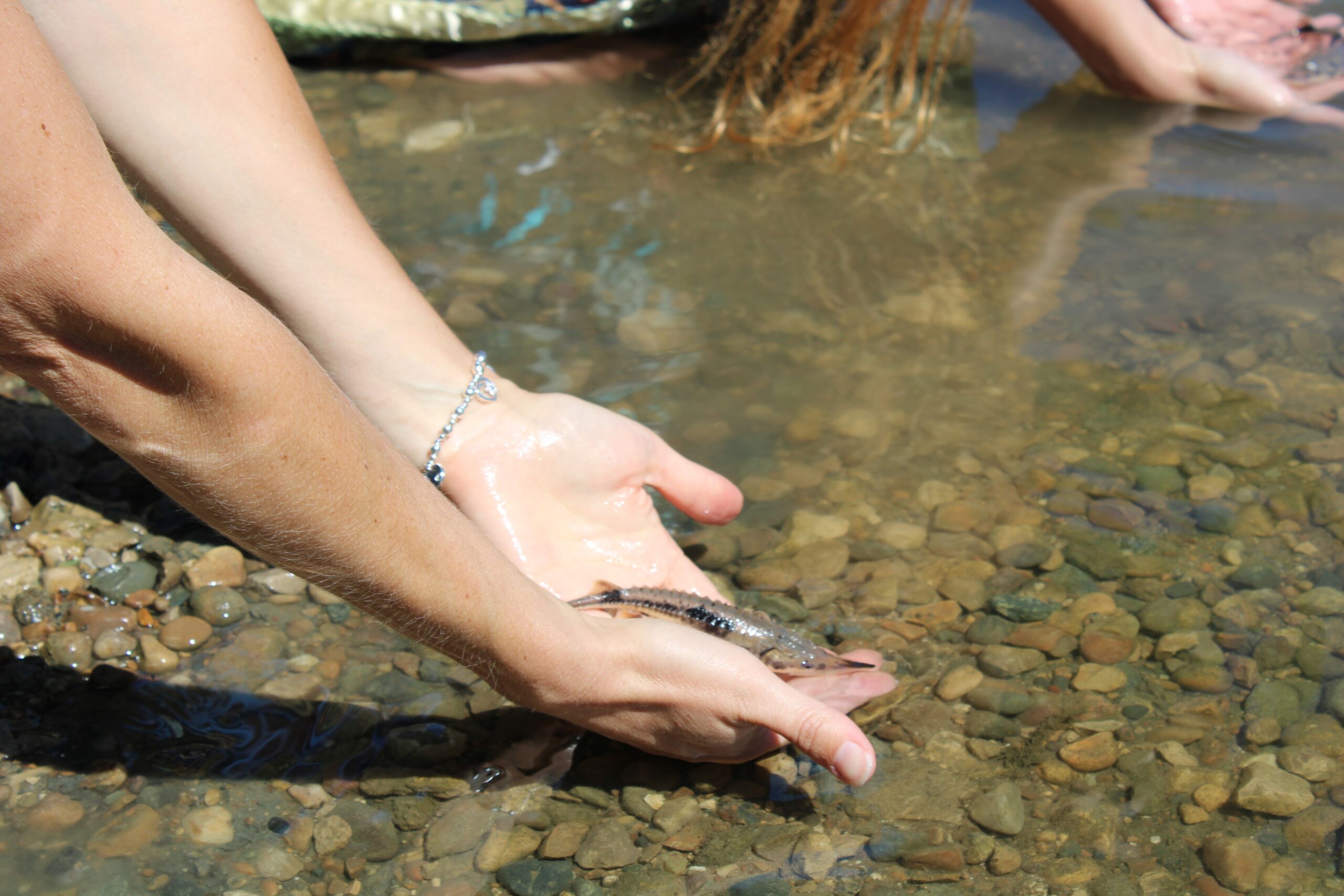
By Native News Online Staff, Native News Online
This article originally appeared on Native News Online. Founded in 2011, Native News Online reaches millions of Native and non-Native readers annually including American Indians, Alaska Natives, Native Hawaiians and others interested in Native American concerns.
The Match-e-be-Nash-She-Wish Band of Pottawatomi Indians (Gun Lake Tribe) on Friday held its annual sturgeon release into the Kalamazoo River.
Some 160 hatchery-raised lake sturgeon were released at the New Richmond Bridge County Park in Fennville, Mich. A couple hundred people gathered to witness the release of the sturgeon, known as nmé to the Potawatomi, with many children participating by helping to release the fish by hand.
The sturgeon eggs were collected in April by the Tribe’s Environmental Department using mats placed in the Kalamazoo River. After being hatched and raised in a stream-side facility, the young sturgeon grew to about six to eight inches long before their release. These fish will likely remain in Kalamazoo Lake or the river for the fall and winter before eventually migrating to Lake Michigan. Along with the 160 hatchlings, five larger sturgeon from the 2023 release, which had been living in a tank at the Gun Lake Tribal Government office, were also released with trackers to allow environmentalists to monitor their movements. Caring for these sturgeon at the government campus has provided the community, staff, and visitors a unique chance to observe and learn about these remarkable fish.
The hatchery operates as a mobile rearing facility, using water from the Kalamazoo River that circulates through the holding tanks, allowing the sturgeon to imprint on the river’s “environmental code.” This process helps ensure they will return to this part of the river to spawn later in life. Once abundant throughout the Great Lakes, sturgeon are now a threatened and protected species, making this yearly release all the more significant.
“The Tribal approach to sustainable management is to recognize the impact that our current actions have on the next seven generations,” said the Tribe’s Environmental Director Liz Binoniemi-Smith. “The long life of the sturgeon requires careful management with this forward-looking approach, and through careful conservation, we hope to support this animal that is so important culturally to Neshnabék (Anishinabe People) as well as to the Great Lakes ecosystem.”
The Tribe maintains a reciprocal relationship with nmé and all the natural world. The nmé historically supported the Neshnabék by providing food and other resources. Now, this reciprocal relationship continues with the Neshnabék supporting the nmé.
“The Tribe respects nmé as kin, and nmé are a clan animal that are highly regarded for their wisdom from living on the earth for so long,” said Tribal Council Member and Elder Jeff Martin.
Catch more news at Great Lakes Now:
Seneca Nation Sues City for More than 450,000 Gallons of Wastewater Overflow
New Interagency Agreement Supports Water Tribal Water and Sanitation Projects
Featured image: The sturgeon will eventually make their way to Lake Michigan. (Photo/Gun Lake Tribe)




